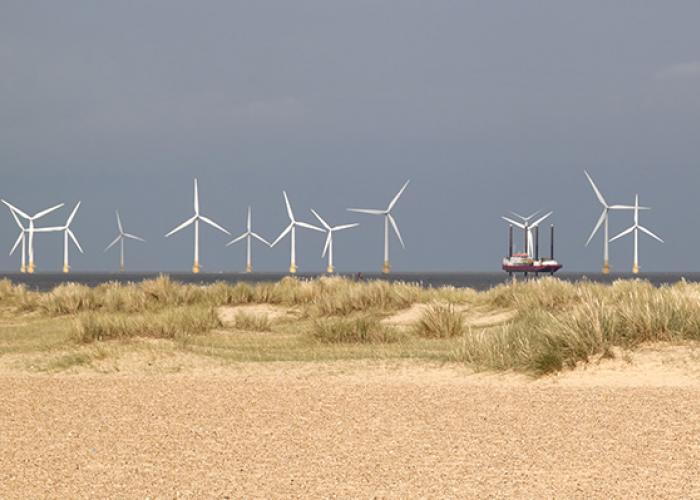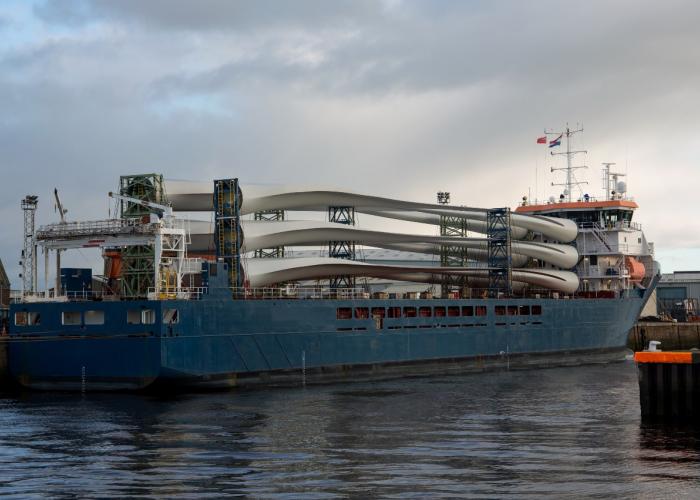
Supporting safe operations with accurate marine weather forecasts
Marine weather conditions have a significant impact on the offshore renewable energy industry. Nigel Tozer explains why accurate coastal forecasts are critical to the success of a project.
When constructing an offshore windfarms, to mitigate these impacts, accurate wind and sea forecasts are needed both to avoid personnel being exposed to dangerous conditions, and to avoid the risk of damage or loss to expensive infrastructure and assets.
Likewise, during the O&M phase, safe working and operational efficiency, as well as routine maintenance and extraordinary inspections, can all be hindered by adverse wind and wave conditions. Regional forecasts generally do not provide sufficient accuracy, particularly where there are shallow banks or strong currents.
Rising to the challenge
Meeting these challenges requires accurate short to medium range forecasts based on downscaling modelling. This ensures that the timescales and the zones covered by the forecasts are as precise as possible, so that decision-making is based on information which is genuinely site-specific and includes regular updates and warnings relevant to the operational constraints of the particular site.
HR Wallingford has a long track record of providing high resolution metocean conditions: wind, wave, water level and currents for the design stages, but also operational marine forecasting services for the construction and O&M phases. For example, we provided high resolution forecasts of wave conditions for the construction of the Gunfleet Sands Offshore Wind Farm and the Lynn and Inner Dowsing Wind Farm. Behind these services is a history of marine research and modelling experience.
Developing solutions
We have developed a coastal and marine forecasting service which combines global and regional wind and wave forecasts, with downscaling local wave transformation and response models. This provides high spatial (downscaled to 50m) and temporal (down to 15 minutes) site specific forecasts and warning services for both the short to medium term (one to five days) and potentially longer lead times of up to ten days.
The forecasts can also include the response of vessels to marine conditions, with assessments of ship mooring and underkeel clearance in approaches to and within ports, to assist planning the logistics of vessel routing, cable laying and the safe and efficient use of marine, port and offshore facilities.
Customised forecasts
In the case of a typical offshore windfarm, the forecasts of the metocean conditions are supplied on a customised and secure website, with updates provided up to four times a day. The forecasts show the variability in conditions across the development area and warnings are given when predicted conditions exceed the defined safe operating thresholds of the facility.
In-situ measurements, when available, can also be presented alongside the forecasts, for confirmation of accuracy and confidence in the forecasts.
Integration and collaboration
HR Wallingford has developed software that integrates with offshore wind, wave and surge forecasts and can also be combined with site environmental monitoring and management systems. We have been working with the Met Office, and other suppliers of offshore forecasts such as the European Centre for Medium-Range Weather Forecasts (ECMWF), for more than 15 years to provide nearshore forecasts for a wide range of customers.
Accurate forecasting through system development
Part of the work involves developing new techniques to increase forecast accuracy. One example is the WaveSentry project which exploits a diverse set of model and observed data sources, including novel remote-sensed and ship based measurements of wave conditions, as well as more traditional sources of real-time in-situ data to improve short lead time probabilistic forecasts of the metocean conditions.
Operational efficiency can also be affected by poor conditions at storage facility berths within ports and harbours. The company has many years’ experience of modelling waves and flows in ports and harbours traditionally for assisting the industry in optimising port layout design; however the same models can also be used
for forecasting.
Existing wave model locations
HR Wallingford has existing wave models of the approaches to over 80 per cent of the UK ports and harbours actively supporting the offshore renewable sector and detailed port models of several key harbours including Great Yarmouth, Newhaven, Harwich, Immingham, Barrow, Mostyn and Swansea.
Planning marine operations
To further support planning marine operations, HR Wallingford’s PortOps operations simulation system has been designed to provide assistance in the logistics of marine operations, and in examining port/terminal layouts and storage requirements. When applied to the construction and operation of windfarms, PortOps helps to assure safe and efficient marine operations, protecting offshore personnel and vessel assets by accounting for windfarm service vessel operational thresholds in harbours and open seas. It can also be used to evaluate the operability of vessels such as jack-up barges, which are susceptible to currents and mobile beds.
PortOps was developed as a ‘shell’ allowing individual operational/terminal components, such as vessel arrivals, cargo handling, allocation of resources (pilots, tugs, berths, equipment, labour) to be represented as sub modules. These are integrated to form a simulation of the whole operation in question, incorporating historical or forecast weather conditions and their influence. This allows windows of uptime to be accurately represented for each discrete operation, and provides guidance on the optimal strategy for both short and longer term planning.
Adapted from an article published in Wind and Energy Network.
Want to know more?



